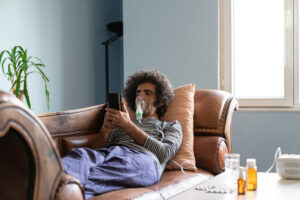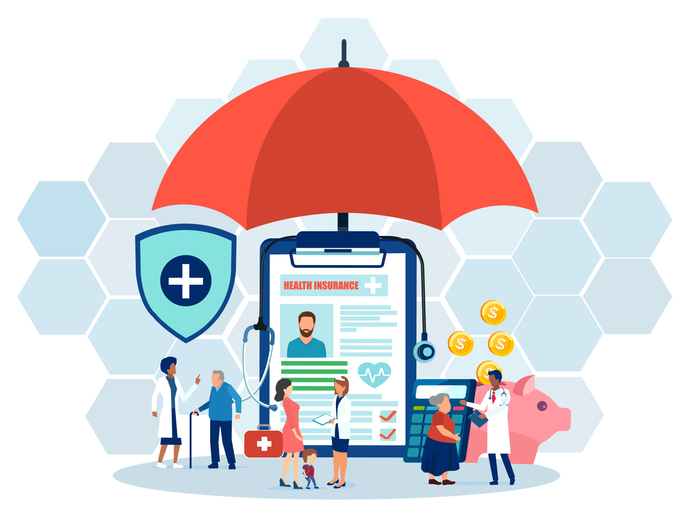
Earlier this year, a patient of an Oklahoma hospital had been in and out of the emergency department six times in the previous 10 days for treatment of a severe bone infection.
But because he lacked trust in the healthcare system, he didn’t want to stay in the hospital. So he was offered care in the home. The only issue was that he did not have a traditional home; he was living in a trailer in his friend’s yard.
This wasn’t a problem for the hospital, which partners with Medically Home, an organization that works with providers to offer home-based care.
“They were able to admit this person who was so distrustful of the system who lived in circumstances that you might not consider a home and get his condition cared for for the first time,” said Pippa Shulman, chief medical director of Medically Home.
Shulman spoke on a panel last week at the Mayo Clinic Platform Conference about how the Boston-based organization is working to reach those in disadvantaged communities. Medically Home, which was founded in 2016, partners with 13 health systems in 14 states, including Mayo Clinic and Kaiser Permanente. The company provides training, protocols, procedures and technology to help health systems provide the care, and it manages the goods and services that patients need. In return, Medically Home charges a fee to its partners.
Under the current public health emergency, Medicare and many state Medicaid programs cover hospital-at-home care, as do multiple Medicare Advantage plans and commercial insurers, according to Shulman.

A Deep-dive Into Specialty Pharma
A specialty drug is a class of prescription medications used to treat complex, chronic or rare medical conditions. Although this classification was originally intended to define the treatment of rare, also termed “orphan” diseases, affecting fewer than 200,000 people in the US, more recently, specialty drugs have emerged as the cornerstone of treatment for chronic and complex diseases such as cancer, autoimmune conditions, diabetes, hepatitis C, and HIV/AIDS.
Not everyone needs a traditional home in order to receive home-based care, Shulman said. As long as they are somewhere with a roof, electricity, running water and a bathroom, Medically Home can offer its services. There are patients who have received care from their friend’s living room or couch, or an Airbnb. In the case of natural disasters, like an ice storm, Medically Home can even put patients in a hotel, Shulman added.
For those who don’t have a home, a Medically Home partner health system might ask if there is a family member or friend who is willing to host them. In this case, the organization will speak with the family member or friend and explain what the care would look like, and the company tries to keep its footprint relatively small in the home, Shulman said.
Patients don’t need any technology themselves to receive home care; Medically Home provides all the necessary equipment, further making it easier for patients to access the care. The company brings patients a tablet, phone and a personal emergency response device that they wear, all of which routes to a command center. For internet access, Medically Home also brings a connectivity device. With these devices, patients are also able to connect with their care team 24/7, Shulman said.
Like the patient who received care in his friend’s trailer, many lack trust in the healthcare system. Providing care at home can restore that trust, Shulman said.
“When we think about vulnerable patient populations, the advantage of moving the care to a place that they call home is that we really place that patient at the center of the care. We are guests in their home,” Shulman said. “Although yes, we provide everything that’s required in the time fashions required, they know when we’re coming, they know who is coming … They’re not left wondering, ‘Who am I going to see today?’”
And not only do patients benefit from this set up, but their caregivers do too.
“We do not ask the caregivers to be the nurse or to provide the care, but they also have that same transparency of who’s coming, what’s happening next,” Shulman said. “They can participate in the visits with the doctor and the nurse. And that’s often a really big change for caregivers compared to what they see in the brick and mortar hospital.”
Although Medically Home is offering care to many patients in nontraditional home settings, some patients are still out of reach. The next frontier is rural communities, where broadband access is challenging, Shulman said. She added that there are several avenues the company is exploring to improve this problem, such as using devices that can increase the strength and power of wireless signals, or using satellite technology.
“We work in multiple rural communities already, but that’s the area where our connectivity challenges are the greatest,” Shulman said. “I just want to make sure that we’re creating a reliable and robust connectivity path for as many patients as possible and I think rural areas are where that can be challenging.”
Photo: selimaksan, Getty Images














